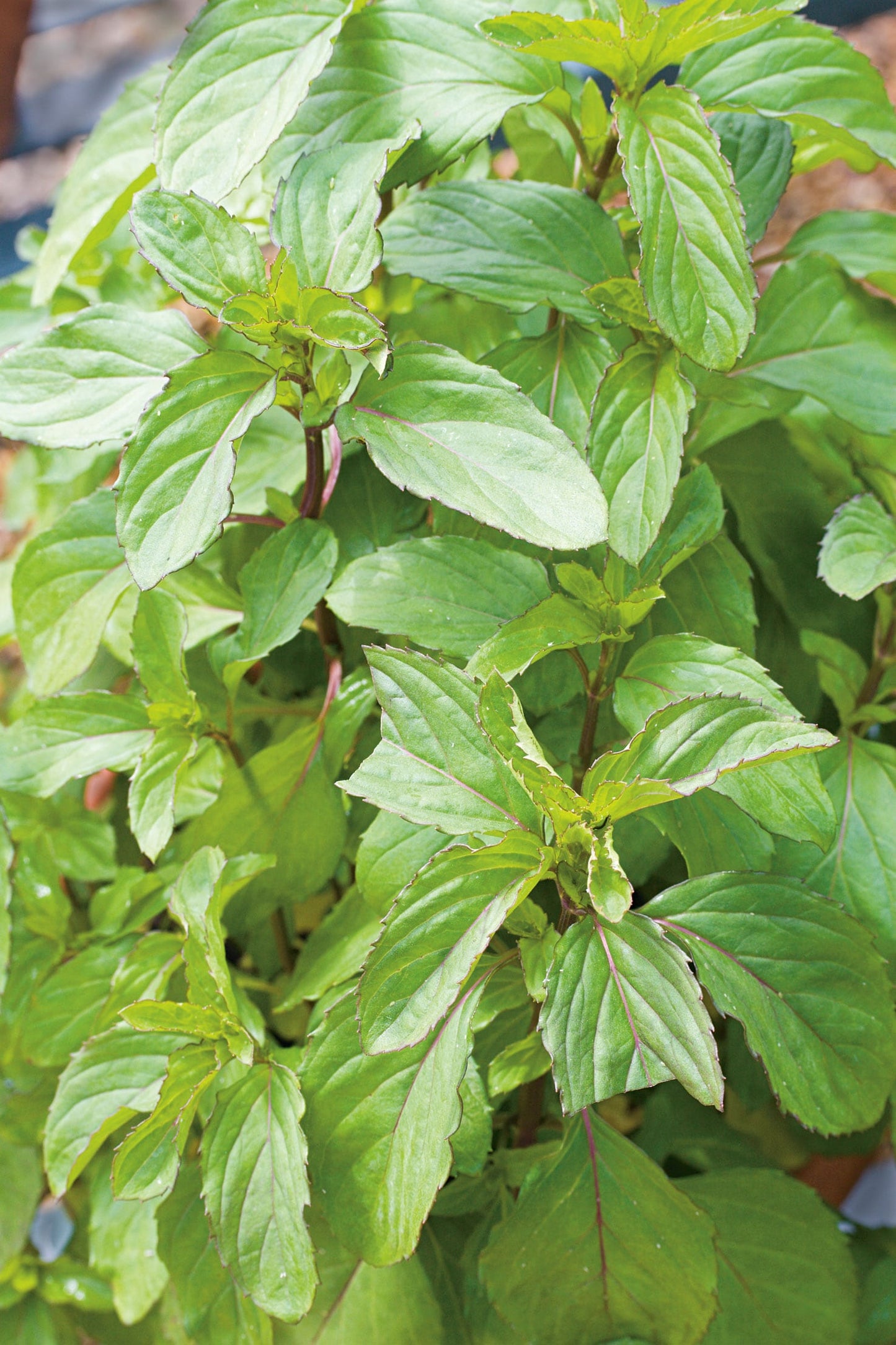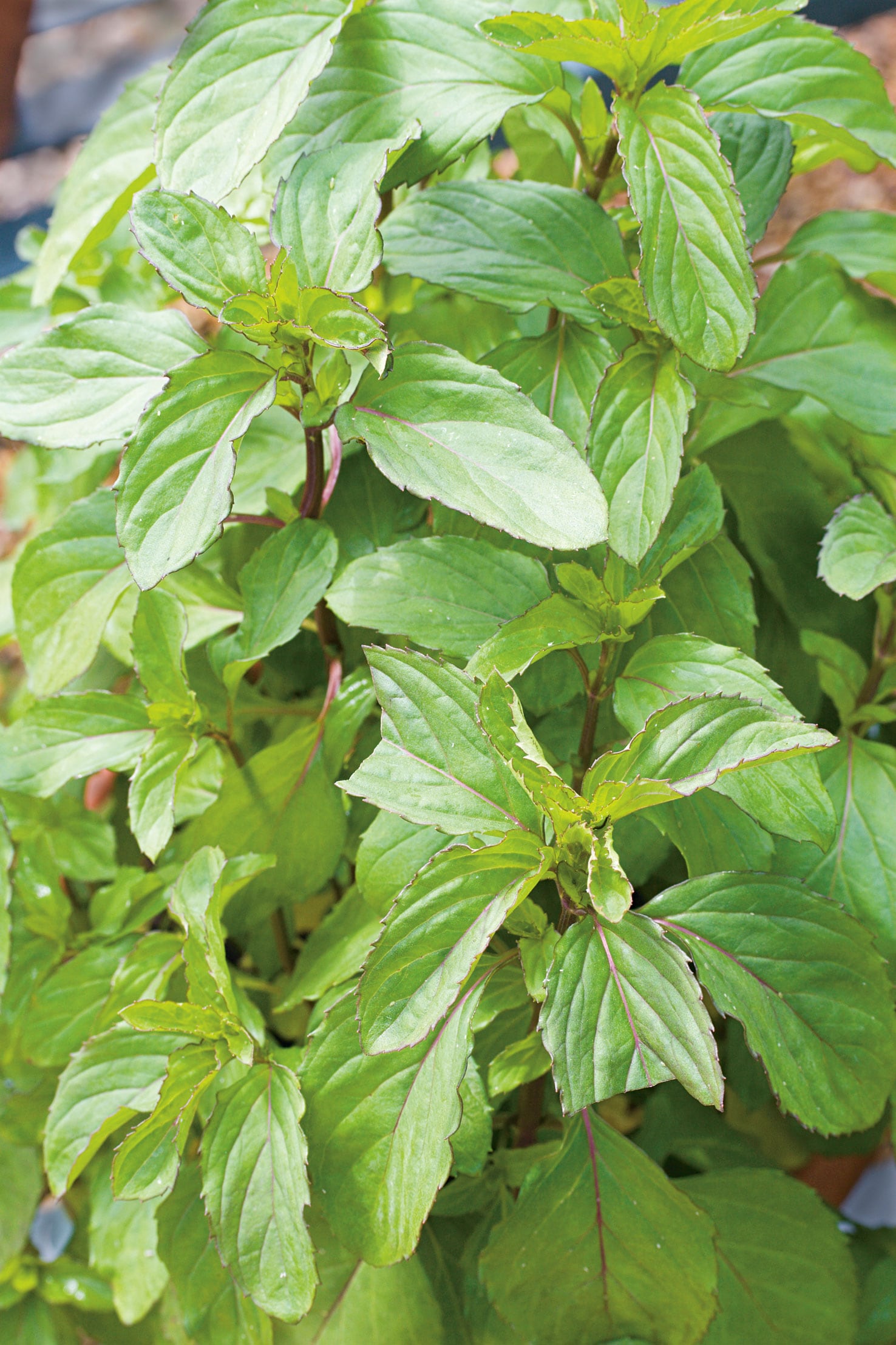Mint Peppermint
Mint Peppermint
Packet Size: 100 seeds
Couldn't load pickup availability
Peppermint (Mentha x piperita) is a vigorous grower with dark green leaves and that classic, refreshing scent. It’s one of the most popular mints for cooking, teas, and homemade remedies. Just a heads-up...mint loves to spread, so it’s best grown in its own pot to keep it in check. A hardy perennial, it comes back year after year with very little fuss.
SPRING
- Sow seeds in trays or plugs.
- Lightly cover with perlite.
- Avoid overwatering once seeds have germinated.
- Pot up into individual pots when seedlings are large enough to handle.
- Grow on until ready to plant out after hardening off.
SUMMER & AUTUMN
- Harvest leaves regularly.
- Trim plants to keep them tidy.
- Encourages fresh, young growth.
WINTER
- Fully hardy – will survive outdoors.
- Pot up a small plant for the windowsill to enjoy fresh leaves indoors.
📌USES
CULINARY
Drinks: Add to iced tea, lemonade, cocktails like mojitos, or simply infuse in water for a fresh twist.
Salads: Chop fresh mint and add it to salads, including fruit salads, tabbouleh, or potato salads. Mix with natural yogurt for a quick, tasty dressing.
Sauces and Dressings: Blend with other herbs to make pestos, chutneys, or sauces - perfect for grilled meats or vegetables.
Chillies: add mint to spicy dishes as a cooling counterpoint that also brightens the flavour.
Desserts: use fresh mint leaves to garnish or flavour ice cream, chocolates, and other sweets.
A Tasty Idea: blend mint and simple syrup to make a base sauce, add some fresh coriander and pineapple chunks for a zesty pineapple salad. Mint brings out the sweetness and freshness, while coriander adds a savoury touch.
Fruit Dishes: Sprinkle chopped mint over fresh fruit or mix into fruit salsas.
Pairings: a classic match with lamb, peas, courgettes, and more.
OTHER USES
Insect Repellent: Mint plants naturally deter pests like ants, fleas, and aphids in the garden.
Bath: Add fresh mint leaves to bathwater for a relaxing, refreshing soak.
Potpourri: Dried mint makes a lovely, fragrant addition to homemade potpourri.
Breath Freshener: Chewing on fresh mint leaves or drinking peppermint tea can help freshen breath
MEDICINAL
- Peppermint tea is a gentle remedy to help soothe indigestion and ease discomfort after eating. It’s been a trusted go-to for generations.
- Peppermint Oil is common in many natural remedies, used to help with:
Digestive issues like bloating, cramps, and indigestion
Tension headaches and mild migraines
Congestion—may help clear airways and ease symptoms of colds, flu, or bronchitis
Skin irritation—the cooling effect may relieve itching and discomfort
Muscle aches and tension—great when used (diluted) for sore muscles
- Aromatherapy - the refreshing, invigorating scent of peppermint oil may help relieve stress and boost focus—perfect for a mid-day pick-me-up.
Please note: we do not promote the medicinal use of plants – guidance and information should be sought elsewhere. Always seek professional medical advice and consult trusted sources for health-related guidance.

Collapsible content
Sowing
- Mar
- Apr
- May
Harvesting / Flowering
- Jun
- Jul
- Aug
- Sep
- Oct
- Nov
- Dec
- Jan

